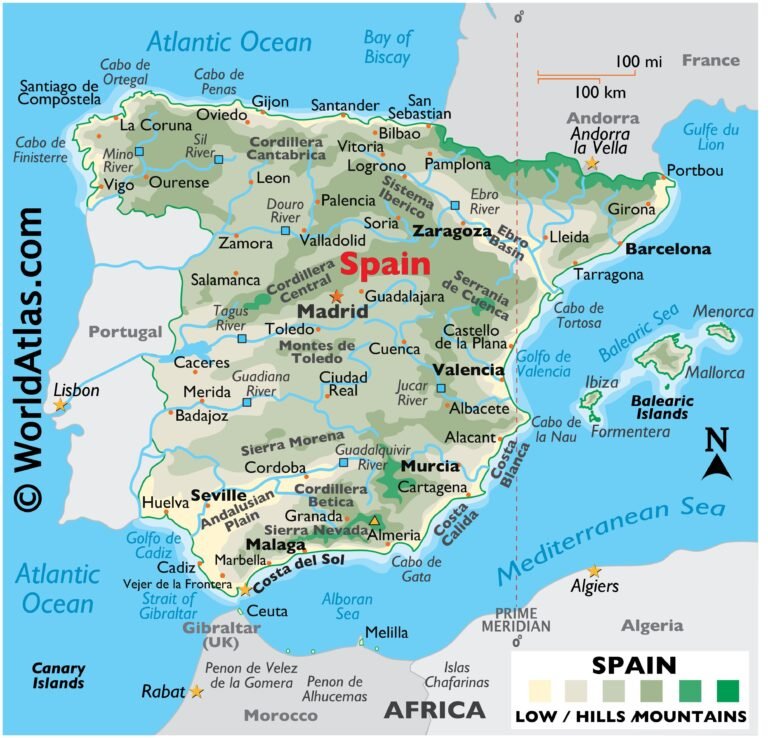Spain, a country renowned for its vibrant culture, stunning landscapes, and rich history, attracts millions of visitors each year. However, not every time of year or event makes for a pleasant travel experience. Whether you’re planning a romantic getaway in Barcelona, a sun-soaked adventure in the Costa del Sol, or a cultural expedition in Andalusia, it’s crucial to be informed about the less-than-ideal times to visit. This guide aims to shed light on moments when crowds swell, prices spike, or weather takes a fickle turn, transforming what should be a memorable journey into a source of regret. From the sweltering heat of summer to major holidays that can disrupt travel plans, understanding these pitfalls will help you make more informed decisions. By arming yourself with knowledge, you can ensure that your time in spain becomes a cherished memory rather than a cautionary tale. Join us as we explore the worst times to visit Spain – as travel should be joyful, not regretful.
Understanding Spains Seasonal Peaks and Valleys for Timely Travel Decisions
Traveling to Spain offers an exciting array of experiences, but the timing of your visit can substantially impact your adventure. Understanding the country’s seasonal peaks and valleys is crucial for avoiding overcrowding and dissatisfaction. Here are some essential insights to consider:
- Summer (June to august): This is primarily peak tourist season, with popular destinations like Barcelona, Madrid, and Seville brimming with visitors. Expect soaring temperatures, crowded attractions, and inflated prices.
- Holy Week (easter): While immersing yourself in Spanish culture is enticing, the crowds that gather for the semana Santa processions can lead to overwhelming experiences. Hotels and accommodations may be scarce and expensive.
- Autumn (September to November): Although the weather is pleasant, many tourists continue to linger. Early autumn can still be crowded, leaving late September through October as more favorable months for a serene experience.
- Spring (March to May): A double-edged sword where the charming landscapes bloom with vibrant flowers, but late spring frequently enough sees an influx of tourists around public holidays like May Day and Corpus Christi.
- winter (December to February): The cold months bring a stark difference. While popular attractions may be less crowded, especially in Northern Spain, certain tourist areas may have limited services, affecting your travel experience.
In light of these factors, travelers should assess their priorities and make informed decisions. Consider how you want to experience Spain—whether it is through the lens of lively festivities or tranquil escapades.Planning your journey to coincide with the industry’s quieter periods can enhance your experience, enabling you to explore Spain’s rich culture and stunning scenery without the backdrop of frustration. In addition, leveraging tools and resources available on platforms like Gezify will help you navigate these timelines skillfully, ensuring that your trip becomes memorable for all the right reasons.
Navigating Local Holidays and Festivals to minimize Crowds and Maximize Enjoyment
When planning your trip to Spain, it’s crucial to consider local holidays and festivals that can disrupt your travel experience.In a country where celebrations can draw large crowds, knowing when to steer clear can definitely help you avoid disappointment. Here are some key dates to watch out for:
- Semana Santa (Holy Week): Occurring in March or April, this nationwide religious festivity transforms popular cities like Seville and Málaga into bustling hubs of processions, making streets crowded and accommodations expensive.
- Feria de Abril (April Fair): Just after Semana Santa, Seville hosts this lively fair filled with food, dance, and bullfighting. While the atmosphere is vibrant, it can be overwhelming for tourists who prefer a quieter experience.
- San Fermín (Running of the Bulls): Held annually in Pamplona during the first week of july, this festival attracts tourists from around the globe, leading to booked accommodations and inflated prices.
- La Tomatina: This famous tomato-throwing festival takes place in Buñol on the last Wednesday of August. While it’s a unique experience, it can be very chaotic and crowded.
- Día de la Hispanidad (Columbus Day): Celebrated on October 12th, this day sees parades and festivities throughout the country, particularly in Madrid, leading to crowded streets and limited services.
| Month | Event | Location | Crowd Level |
|---|---|---|---|
| March – April | sema Semana Santa | Seville,Málaga | ⚠️⚠️⚠️⚠️⚠️ |
| April | Feria de Abril | Seville | ⚠️⚠️⚠️⚠️⚠️ |
| July | San Fermín | Pamplona | ⚠️⚠️⚠️⚠️⚠️ |
| august | La Tomatina | Buñol | ⚠️⚠️⚠️⚠️⚠️ |
| October | Día de la Hispanidad | Madrid | ⚠️⚠️⚠️⚠️⚠️ |
Being aware of these events allows travelers to adjust their schedules and find option dates for their visits.For those looking for a more serene experience in Spain, consider planning around these holidays. This approach not only minimizes crowds but also enhances your overall enjoyment, allowing you to truly appreciate the rich culture and stunning landscapes Spain offers. Keep this guide handy when you’re planning your next getaway with Gezify!
while spain boasts a myriad of attractions year-round, it’s essential to be aware of the times that might lead to regret for unwary travelers. Whether it’s the sweltering summer heat,overcrowded festivals,or the drab winter chill,being informed can enhance your travel experience significantly. By avoiding these less-than-ideal periods, you can immerse yourself in the vibrant culture, stunning landscapes, and delightful cuisine that Spain truly has to offer. Plan wisely, and may your journeys through this stunning country be filled with joy and discovery.
